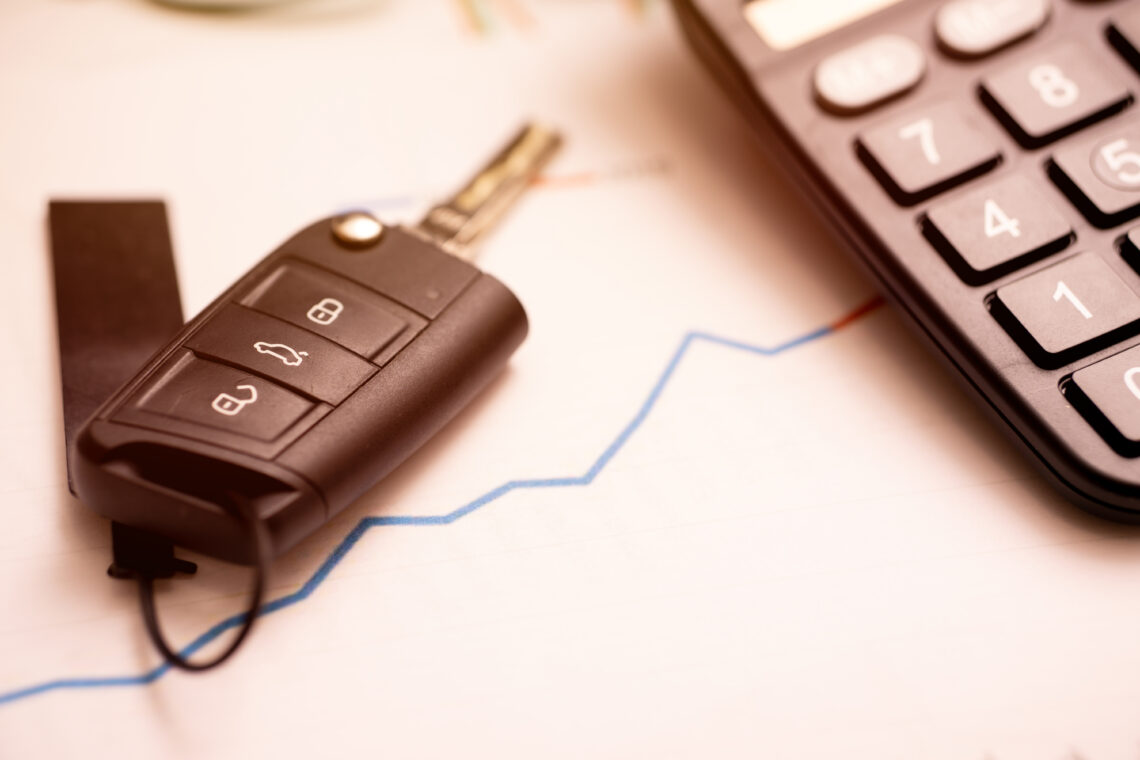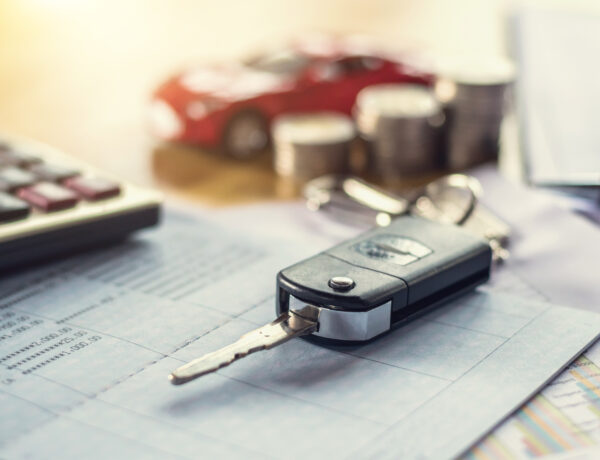How much car can I afford?
We know how exciting buying a new car is — especially as a first-time car owner. But it can also be an overwhelming and bumpy ride when it comes to calculating just how much you can afford. You’ll want to consider monthly payments, car insurance, gas, and regular maintenance costs before driving off the lot, as all of this impacts how much you’re paying. So if you’re asking the question, “How much car can I afford?” find out what you need to know in this guide.
Step 1: Budget
Your budget involves more than setting a maximum price for a car purchase. You’ll also want to factor in expenses that aren’t related to car ownership. Your mortgage or rent, utilities, groceries, and spending habits all play a part in calculating your budget. And we don’t always realize how our spending habits affect our monthly budgets.
You’ll need to calculate how much you spend on both the essentials and nonessentials each month. How much and how frequently do you buy things you don’t really need? If your goal is to buy a car, you’ll need to get real with your spending habits. Our saving habits also tell a story. How much do you save each month? Are you consistent with saving? Take a close look at your money habits to get a better estimate for your budget.
There’s no single answer to “How much car can I afford based on salary?” Typically, you can expect to spend anywhere from 10% to 50% of your yearly pretax income on a car purchase, with 30% being the average. It really depends on your individual situation, but ultimately, the 30% average also extends to the long-term costs of ownership. Loan payments, insurance costs, fuel, maintenance, and registration fees all add up over time. And according to AAA, this comes to an average of $10,728 per year and about $894 per month for long-term costs.
If you make $60,000 per year, that means a purchase price of $18,000. If your take-home pay is $4,700 per month, your monthly car expenses shouldn’t exceed $1,410 at 30% of your budget. Look at the table below to get a rough idea of what you can expect to budget for:
| Yearly Income | Monthly Income |
Maximum Purchase Price at 30% |
Monthly Budget at 30% |
| $50,000 | $4,166.67 | $50,000 x 30% = $15,000 | $4,166.67 x 30% = $1,250 |
| $75,000 | $6,250 | $75,000 x 30% = $22,500 | $6,250 x 30% = $1,875 |
| $100,000 | $8,333.33 | $100,000 x 30% = $30,000 | $8,333.33 x 30% = $2,499 |
These budgets come from an average of 30% of pretax income. The total monthly budget you set for your car expenses shouldn’t go beyond 30% of your take-home pay. Once you’ve set your budget, look at your overall monthly expenses. Factor in fuel costs, maintenance, car payments, and insurance payments. Is your budget enough to cover it all?
While you can use online calculators to get a rough estimate of what you’ll cover each month, insurance rates involve several factors. Age, driving records, gender, marital status, location, and policy type all play a role in determining total costs. The company you use also influences how much you’ll pay. On average, you can expect insurance to cost around $168 per month for full coverage and $52 per month with minimum coverage, which is typically a liability-only policy.
For a better idea of what your budget can cover, the next table highlights the average costs of car ownership and what these mean for your monthly budget:
| Low End | Upper End | |
| Fuel Cost | $150 per month | $200 per month |
| Car Payment | $525 per month (used) | $700 per month (new) |
| Insurance | $52 per month | $168 per month |
| Maintenance Cost | $121 per month | $125 per month |
| Total Monthly Costs | $848 per month | $1,193 per month |
Remember, these are just averages and example calculations. Your monthly expenses and what you budget for depend on your unique situation.
Step 2: Down payment
If you’re applying for a loan, your down payment will affect the interest rate, payment amount, and overall terms of the loan, including any trade-in value or cash toward the purchase. Understanding how much you can put down initially can give you a better idea of what you’ll be paying each month and how much money you’ll need to set aside just for the down payment.
The average down payment ranges between 10% for used and 20% for new vehicles. With a budget of $20,000, for example, you’ll need $6,000 to cover a 20% down payment and $2,000 to cover the lower end at 10%. Here’s an example of what your down payment would be for different budgets:
| Budget/Purchase Price | 10% Down | 20% Down |
| $15,000 | $1,500 down | $3,000 down |
| $22,500 | $2,250 down | $4,500 down |
| $30,000 | $3,000 down | $6,000 down |
What you pay depends on the loan amount you’re requesting, and your credit score, vehicle purchase price, and loan terms all factor into how much you end up putting into your down payment. Because of these factors, you’ll need to consider your loan options carefully.
Step 3: Loan considerations
Taking out a car loan means monthly payments, and these vary based on your loan amount, the terms, and the interest rate. You have a few different loan options, too, which can affect how much you’ll get approved for and how much your interest rate will be. The average interest rate for a new car is about 5.16%, with rates for used cars averaging around 9.34%. Generally, the higher your credit score, the better your chances of landing a lower interest rate. Here’s a breakdown of the different types of loans you might consider for your vehicle purchase:
- New car loan: New car loans are exactly what they sound like — loans for purchasing a brand-new vehicle. You’ll get preapproved for your loan before making your purchase and finalize it once you buy.
- Used car loan: Used car loans work the same as new car loans, but the terms can differ because of the lower value of a pre-owned car.
- In-house financing: In-house financing supplies you with a vehicle loan directly through the dealership you’re purchasing from. Not all dealerships will offer in-house financing, though, so do your research if you’re looking for this type of loan.
- Indirect financing: Indirect financing involves a third party in addition to you and your lender. So a car dealer could locate the best loan option for you using their financial network, and you then make your payments to the bank that they initiate the loan with.
- Private car loan: If you’re purchasing from a private seller, private party car loans are another option. Your bank and other traditional lenders usually offer these, and you can use the vehicle you’re buying to secure it.
- Secured loan: The most common car loan is a secured loan, which uses your vehicle as collateral for the loan. So if you default on payments, the lender can repossess your car to cover the loss.
- Unsecured loan: Unsecured loans aren’t as common and frequently come with higher interest rates since the car doesn’t count as collateral.
- Lease buyout: If you’ve leased a car, you can purchase it at the end of the lease term. Using a lease buyout loan gives you the option to finance the vehicle’s value at the end of the term.
- First-time buyer loan: First-time buyer loans allow you to purchase a car without any credit history. This is especially beneficial if you’ve not had a chance to build up your credit enough for a traditional loan and you’ve not owned a car before.
Keep in mind that terms for a car loan range from 24 to 84 months, with the average loan term ranging between 60 and 70 months. The longer the terms, the lower the monthly payment. But a longer loan term isn’t always a great idea, since it’ll take more time to pay off your car. You’ll also end up paying more in the long run because of the interest. Use a car loan calculator to get a more accurate estimate of what you can afford.
Step 4: Determine the best path to ownership
Subscription-based options are becoming more popular as an alternative to car ownership. With a car subscription like Flexcar, you have plenty of options for lightly used makes and models, without the same long-term commitments as traditional car ownership. With subscriptions operating on a monthly payment basis, you have the flexibility to drive a different vehicle any time you want.
You also don’t have the added responsibility of traditional car ownership, as subscription providers typically cover maintenance and insurance costs. The only drawbacks you might see are the inability to purchase a forever car, and you’ll still need to budget for your gas expenses.
If you’re seriously considering purchasing, look at the pros and cons closely. Expect a higher price tag when buying brand-new, plus the monthly expenses. Interest rates also vary between new and used options, with new purchases often landing you a lower rate. Even so, you’ll need a higher loan allowance for a brand-new vehicle, and insurance costs are usually higher since new-car policies often require full coverage versus liability-only.
On the other hand, financing used comes with higher interest rates, bringing up the amount you’ll need each month for covering payments. Leasing is also an option, especially when it comes to driving a brand-new car without the purchase costs. But there are downsides to leasing. You could end up spending more in the long run, especially with hidden costs like extra mileage fees, insurance deductibles, and maintenance limitations.
The decision to purchase a car is a big deal, and there’s not a single right answer to “how much car can I afford?” New or used, lease or subscribe, it’s important to manage your budget and determine what you’ll pay to maintain your car. For more insights into how much car you can afford, calculate your expenses and budget using an online payment calculator. You’ll get a more accurate estimate of the costs that you’ll need to cover, including monthly payments, maintenance, and insurance costs. Then, you have the information you need to make the best decision.




